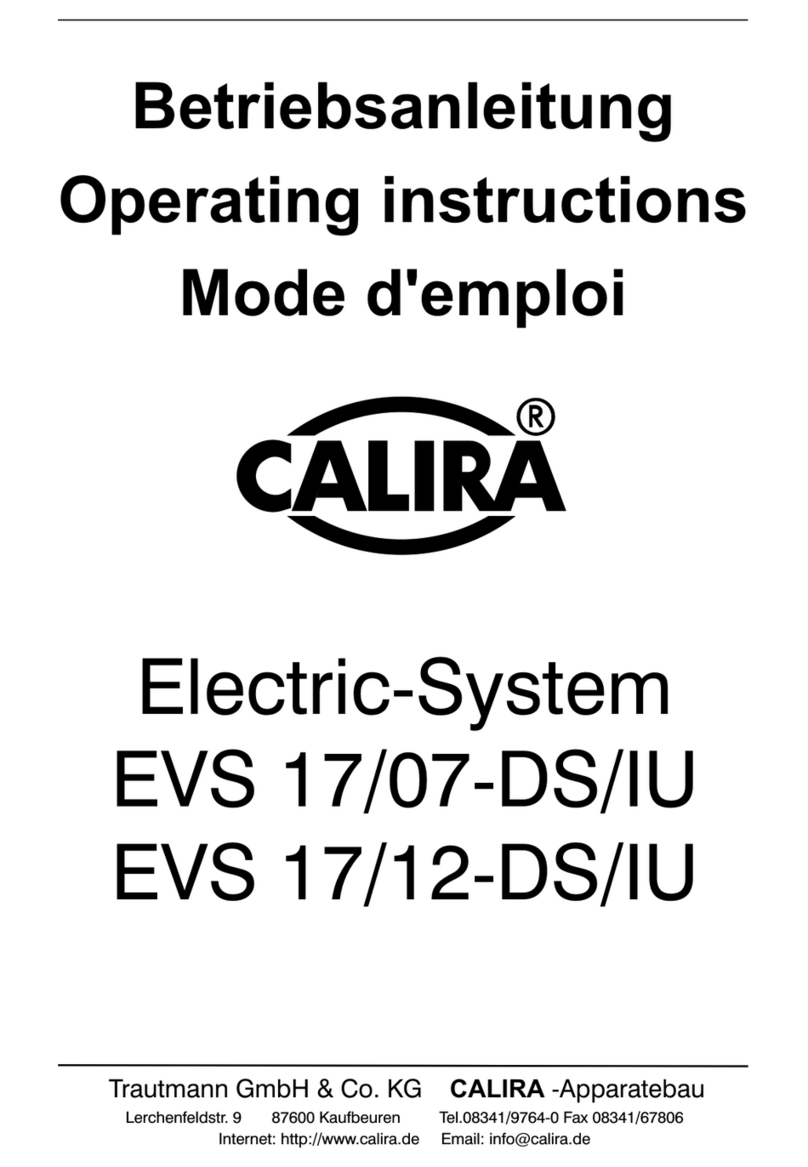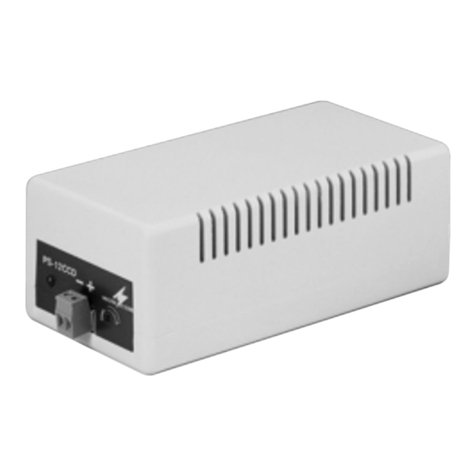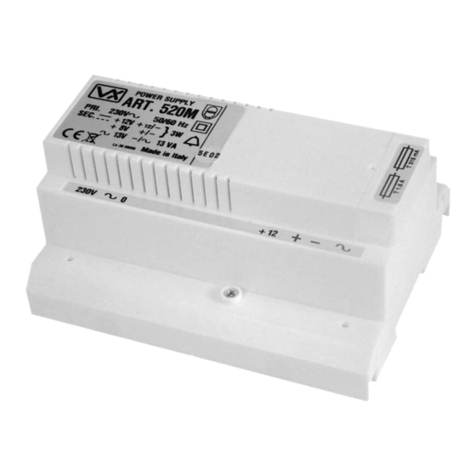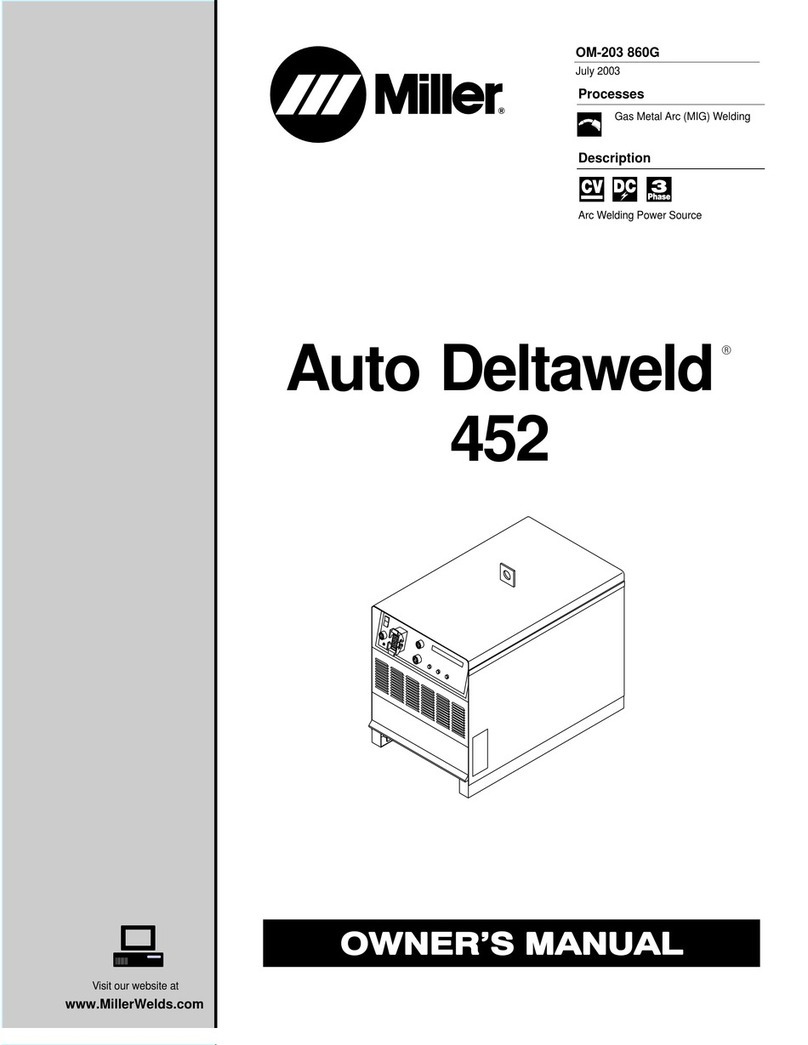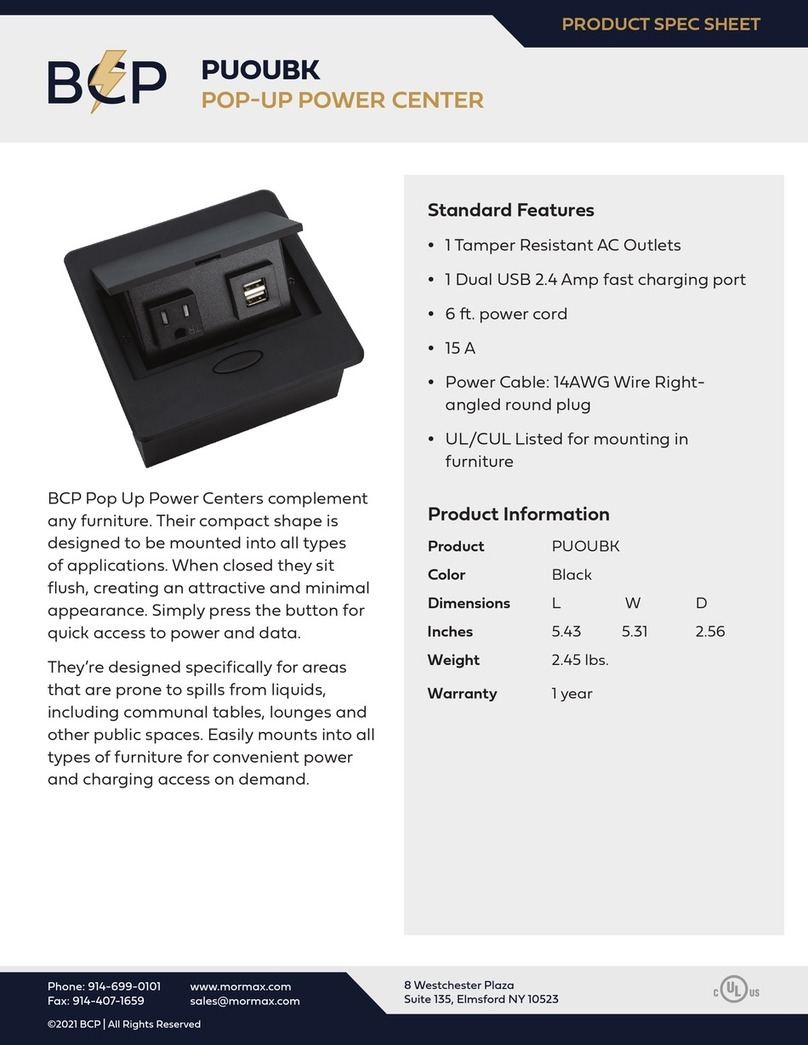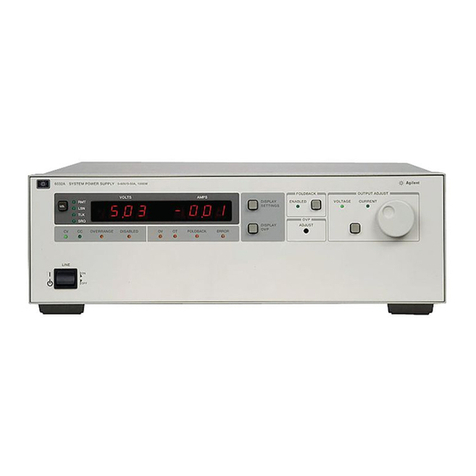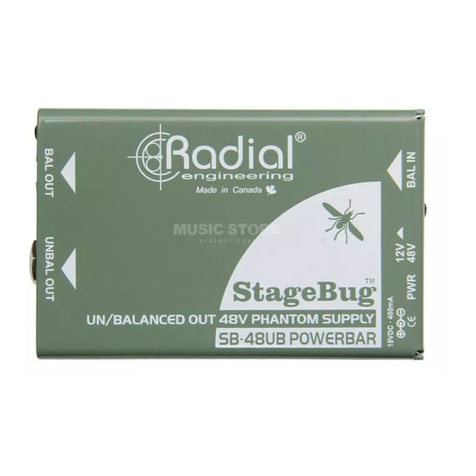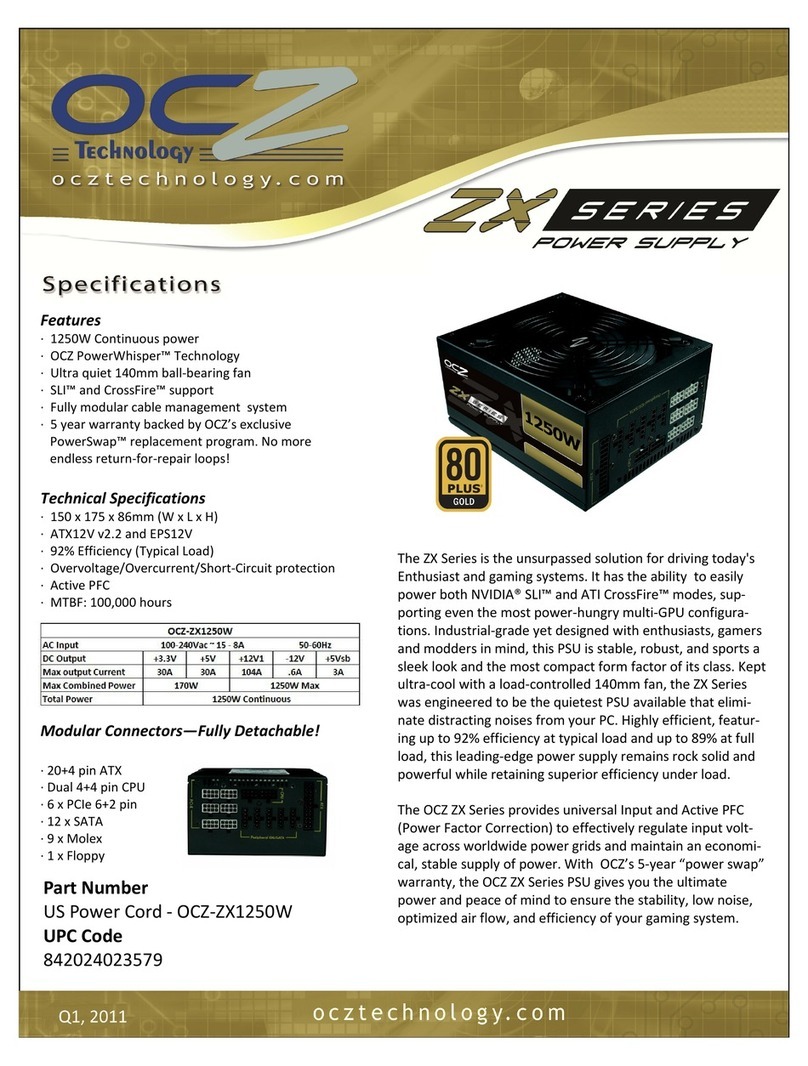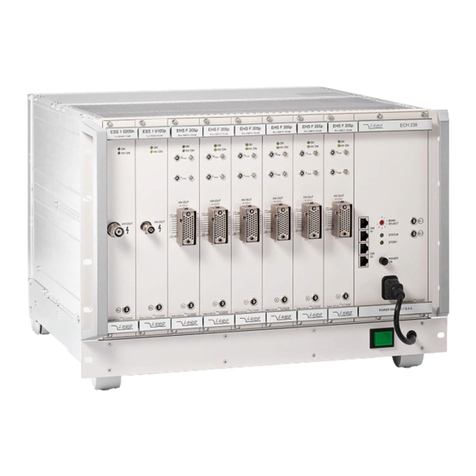
PrtCode:520MR.doc 18/05/2006 Rev.1.1
Power supply with built-in relay
Art.520MR
Alimentatore con relè incorporato
INSTALLATION INSTRUCTION ISTRUZIONI D’INSTALLAZIONE
Fig.1 Fig.2
DESCRIPTION DESCRIZIONE
The Art.520MR is a regulated power supply with mains voltage 230Vac
50/60Hz and outputs 12Vdc, 8Vdc and 13Vac. The unit has a built-in en-
slavement relay controlled by the inputs M, Band A.
By providing a ground signal to terminal Mand a +20V signal to terminal B
or +12V signal to terminal A, the relay switches linking “normally open”
terminal (“NO1”, “NO2”) to “common” terminal (“C1”, “C2”).
L’Art.520MR è un alimentatore stabilizzato con ingresso 230Vac 50/60Hz
ed uscite 12Vdc, 8Vdc e 13Vac. L’unità incorpora un relè d’asservimento
comandato dagli ingressi M, Bed A.
Applicando un segnale di massa al morsetto Med un segnale +20V al
morsetto Bo +12V al morsetto A, il relè commuta chiudendo il morsetto
“normalmente aperto” (“NO1”, “NO2”) verso il morsetto “comune” (“C1”,
“C2”).
TERMINALS MORSETTI
Terminals Description
230V -0 Mains input 230Vac 50-60Hz
+12 +12Vdc 250mA max output
+ +8Vdc 250mA max output
Ground
13Vac 18VA max output
M Relay control – Ground
B Relay control – +20V signal
A Relay control – +12V signal
NC2 Relay normally closed contact 2
C2 Relay common contact 2
NO2 Relay normally open contact 2
NC1 Relay normally closed contact 1
C1 Relay common contact 1
NO1 Relay normally open contact 1
Morsetti Descrizione
230V -0 Ingresso d’alimentazione 230Vac 50-60Hz
+12 Uscita +12Vdc 250mA max
+ Uscita +8Vdc 250mA max
Massa
Uscita 13Vac 18VA max
M Comando relè – Massa
B Comando relè – Segnale +20V
A Comando relè – Segnale +12V
NC2 Relè contatto normalmente chiuso 2
C2 Relè contatto comune 2
NO2 Relè contatto normalmente aperto 2
NC1 Relè contatto normalmente chiuso 1
C1 Relè contatto comune 1
NO1 Relè contatto normalmente aperto 1
PROTECTIONS PROTEZIONI
T315 mA To protect from short circuits on +8Vdc or +12Vdc outputs.
T1,6 A To protect from short circuits on 13Vac outputs.
In case of fuses failure, proceed as follows to replace:
• Remove the mains;
• Holding the power supply with the left hand, pull the fuse holder (fig.1
ref.A) using the right hand;
• Check for damaged fuse and replace using an equal or equivalent one;
• Replace the fuse holder in the relevant housing by pushing it until the
top of the holder is in line with the top of the power supply;
• Restore the mains.
T315 mA Per protezione da corto circuito sulle uscite +12Vdc o
+8Vdc.
T1,6 A Per protezione da corto circuito sull’uscita 13Vac.
In caso di interruzione di uno dei fusibili, procedere come indicato di
seguito per la sostituzione:
• Togliere la tensione di rete;
• Tenendo fermo l’alimentatore con la mano sinistra, rimuovere il
coperchio porta-fusibili (fig.1 rif.A) tirandolo con forza verso l’alto
utilizzando la mano destra;
• Identificare il fusibile danneggiato e rimpiazzarlo con uno uguale o
equivalente;
• Riposizionare il coperchio porta-fusibili nella propria sede spingendolo
fino a che la sua parte superiore non è allineata con la parte superiore
dell’alimentatore;
• Ripristinare la tensione di rete.
CONNECTION TO MAINS COLLEGAMENTO ALLA RETE ELETTRICA
The system must be installed only by a competent engineer and according
to national rules in force and installation diagrams proposed (if provided),
in particular we recommend to:
• Connect the system to the mains through an all-pole circuit breaker
which shall have contact separation of at least 3mm in each pole and
shall disconnect all poles simultaneously;
• The all-pole circuit breaker shall be placed for easy access and the
switch shall remain readily operable.
La realizzazione dell’impianto deve essere eseguita esclusivamente da
personale qualificato e nel rispetto delle vigenti normative nazionali e degli
schemi di installazione proposti (se disponibili). In particolare si racco-
manda di:
• Collegare l’impianto alla rete elettrica tramite un dispositivo di interru-
zione omnipolare che abbia una distanza di separazione del contatto di
almeno 3mm per ciascun polo e che sia in grado di disconnettere tutti i
poli simultaneamente;
• Il dispositivo di interruzione omnipolare deve essere posizionato in un
luogo tale da consentirne un facile accesso in caso di necessità.
A



